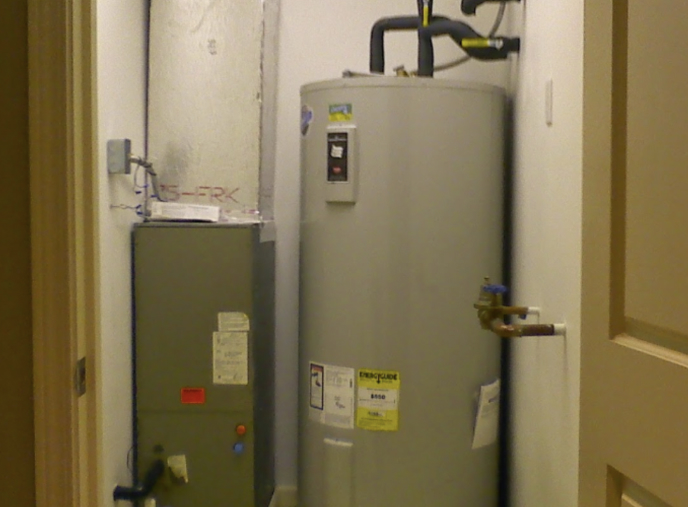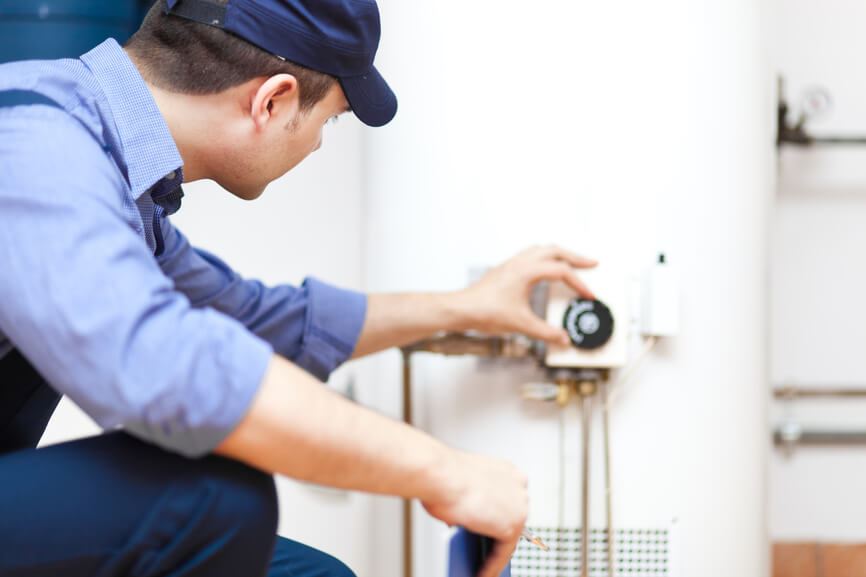Aloha, Hawaii! Living in the stunning paradise of the Hawaiian Islands, from the vibrant streets of Oahu to the tranquil shores of Kauai, we often take our modern conveniences for granted. But what happens when your trusty toilet decides to act up? It’s a situation that can disrupt the serenity of your island life.
Whether you’re a resident of Maui, the Big Island, Oahu, or Kauai, at some point, you might find yourself asking, “Why is my toilet tank not filling?” Don’t worry; Steve’s Plumbing & AC Service is here to lend a helping hand.
Here, we’ll dive into the common reasons behind a toilet tank’s refusal to fill and provide practical solutions to get your bathroom back in working order. No matter which corner of Hawaii you call home, we’re committed to ensuring your plumbing and comfort remain top-notch. Let’s explore the mysteries of your toilet tank together and bring peace back to your island oasis.
Common Reasons Why Toilet Tanks Fail to Fill
Let’s start by examining the most frequent culprits behind a toilet tank not filling as they hold the key to resolving this issue.
Malfunctioning Fill Valves
Fill valves, also known as ballcocks, are responsible for regulating the water flow into your toilet tank. When these valves malfunction, it can disrupt the tank’s filling process. Common issues include valve adjustment problems and blockages or clogs within the valve.
Issues with the Float Mechanism
The float mechanism, comprising the float arm and float ball, plays a crucial role in maintaining the water level in the tank. Damaged float arms or waterlogged float balls can lead to improper tank filling.
Blockages in the Water Supply Line
Blockages in the water supply line can restrict the flow of water into the tank, causing slow or incomplete tank filling. It’s essential to check for any obstructions that might impede water flow.
Problems with the Shut-Off Valve
The shut-off valve, located on the water supply line, controls the water flow to your toilet. If it’s partially closed or faulty, it can hinder the tank’s filling process. Ensuring the valve is fully open is a crucial step in troubleshooting.
Now, let’s dive deeper into each of these common causes and explore practical solutions.
Troubleshooting Steps for Each Common Cause
Malfunctioning Fill Valves
- Turn off the water supply: Locate the shut-off valve near the base of your toilet and turn it clockwise to shut off the water supply.
- Flush the toilet: Flush to empty the tank completely.
- Inspect the fill valve: Check the fill valve for any visible issues, such as adjustment problems or blockages.
- Adjust the fill valve: If the valve is set too low or too high, adjust it accordingly to achieve the correct water level.
- Clean the fill valve: If you suspect a blockage, disconnect the water supply line, remove the fill valve, and clean it thoroughly.
- Reassemble and test: Reassemble the fill valve, reconnect the water supply line, turn on the water supply, and check if the tank now fills correctly.
Issues with the Float Mechanism
- Turn off the water supply: As before, locate and shut off the shut-off valve.
- Flush and empty the tank: Ensure the tank is completely emptied.
- Inspect the float mechanism: Examine the float arm and float ball for damage or waterlogging.
- Replace damaged components: If you find issues, replace the damaged float arm or float ball with new ones.
- Reassemble and test: Reassemble the float mechanism, turn on the water supply, and check if the tank now fills properly.
Blockages in the Water Supply Line
- Turn off the water supply: Once again, locate and shut off the shut-off valve.
- Flush to empty the tank: Ensure the tank is completely empty.
- Inspect the water supply line: Check for any visible blockages or debris within the water supply line.
- Clear blockages: If you discover blockages, use a snake or a flexible wire to clear them.
- Reconnect and test: Reconnect the water supply line, turn on the water supply, and check if the tank now fills correctly.
Problems with the Shut-Off Valve
- Check the shut-off valve: Inspect the shut-off valve for any visible issues, such as corrosion or obstructions.
- Turn the valve clockwise: If the valve is partially closed, turn it counterclockwise to open it fully.
- Flush and test: Flush the toilet and check if the tank now fills properly with the fully open valve.
It’s essential to note that while these troubleshooting steps are suitable for DIY enthusiasts, some toilet tank filling issues may require professional attention. If you’re unsure or uncomfortable with these tasks or suspect underlying plumbing problems, don’t hesitate to reach out to BelRed for professional plumber assistance.
Understanding Your Toilet’s Mechanism
To troubleshoot toilet tank filling issues effectively, it’s essential to grasp how your toilet tank operates. Let’s demystify this process by breaking down the key components and their roles in your toilet’s mechanism.
Fill Valve: The Gatekeeper of Water Flow
At the core of your toilet tank, you’ll find the fill valve, often referred to as the ballcock. This unassuming component is a crucial player in controlling the flow of water into the tank. Its primary job is to maintain the correct water level and ensure that the tank refills after each flush.
When you flush your toilet, the fill valve springs into action, allowing water to rush back into the tank to replace what was used during the flush. As the tank fills, the fill valve closely monitors the water level. When the water reaches the desired height, typically indicated by a floating mechanism, the fill valve shuts off. This precise coordination between the fill valve and the float ensures that your toilet always has the right amount of water for efficient flushing.
Float: Your Tank’s Water-Level Supervisor
The float, often in the form of a float ball attached to a float arm, serves as the water-level supervisor in your toilet tank. Its role is to rise and fall in tandem with the water level.
When you flush, the water level in the tank drops significantly, causing the float to descend accordingly. However, as the tank refills, the float gracefully rises with the water, all while keeping a vigilant eye on the rising level.
Once the float reaches a specific pre-set height, it sends a signal to the fill valve, signaling it to stop the flow of water. In essence, the float tells the fill valve, “That’s enough water.” This shutdown mechanism prevents the tank from overfilling, averting potential spills.
Overflow Tube: The Guardian Against Spills
The overflow tube is the guardian within your toilet tank, protecting against overflows. It’s a slender, hollow tube that extends from the top of the tank just above the waterline.
The overflow tube acts as a fail-safe in case the fill valve or float mechanism fails. If, for any reason, the fill valve doesn’t shut off the water or the float malfunctions, the overflow tube steps in.
When water reaches a certain level in the tank, it flows into this tube, sparing your bathroom from potential flooding. The overflow tube then directs the excess water into the bowl, preventing a mess.
These components work seamlessly together to maintain the delicate balance of water within your toilet tank. This equilibrium ensures efficient flushing, prevents troublesome overflows, and keeps your bathroom routine hassle-free.
Understanding these elements and their roles empowers you to troubleshoot and maintain your toilet effectively. Whether you’re a DIY enthusiast or simply a homeowner looking to keep your plumbing in top shape, this knowledge is a valuable tool in your arsenal.
Maintenance Tips to Prevent Future Issues
Prevention is key to avoiding future toilet tank filling problems. Here are some maintenance tips to help you keep your plumbing in top shape:
Routine Maintenance
- Regularly check for leaks: Inspect your toilet for any leaks, both around the base and within the tank. Leaks can be early indicators of potential issues.
- Clean the fill valve: To prevent blockages, clean the fill valve every few months. Disconnect the water supply line, remove the valve, and clean it thoroughly.
- Inspect the flapper: Examine the flapper for wear or damage, as it can affect the seal. Replace it if necessary to prevent water from leaking into the bowl.
- Monitor water levels: Keep an eye on the water level in the tank and ensure it’s at the manufacturer-recommended level.
Tailored Tips for Hawaii
Living in Hawaii comes with its unique plumbing challenges, including water conservation. Here are some Hawaii-specific tips:
- Install a dual-flush toilet: Consider upgrading to a dual-flush toilet that allows you to choose between a low-volume flush for liquid waste and a full-volume flush for solid waste. This can significantly reduce water consumption.
- Use a toilet tank bank: A toilet tank bank or displacement bag can reduce the amount of water used for each flush by displacing some of the water in the tank. It’s an eco-friendly and cost-effective solution.
- Repair leaks promptly: Address any leaks or running toilets promptly to prevent water wastage and high water bills.
When to Call a Professional
While many toilet tank filling issues can be resolved with DIY troubleshooting and fixes, some situations may warrant the expertise of a professional plumber. Here are specific indicators that it’s time to reach out to a bathroom plumbing specialist:
Persistent or Complex Issues: If you find yourself facing persistent or particularly complex toilet tank filling problems that you’re unable to diagnose or resolve, it’s a clear sign to enlist the help of a professional. Plumbing experts possess the knowledge and experience to identify and address intricate issues efficiently.
Limited Experience or Discomfort: If you’re uncomfortable or lack experience in working on plumbing fixtures, it’s wise to avoid DIY attempts, especially for more intricate tasks. Professional plumbers are trained to handle various plumbing challenges, ensuring the job is done correctly and safely.
Suspected Underlying Plumbing Problems: Sometimes, toilet tank filling issues may be symptomatic of larger underlying plumbing problems, such as low water pressure throughout your home. Professional plumbers can conduct a comprehensive assessment to identify and address these broader issues, ensuring the root cause is resolved.
Concerns About Water Wastage and Rising Water Bills: A malfunctioning toilet can lead to water wastage and higher water bills. If you’re concerned about water conservation and the financial impact of a malfunctioning toilet, professional plumbers can efficiently diagnose and fix the problem, saving you money in the long run.
In these scenarios, don’t hesitate to contact Steve’s Plumbing & AC Service for expert plumbing assistance. Whether you reside in Maui, the Big Island, Oahu, Kauai, or any other part of Hawaii, our skilled team is ready to provide swift and effective solutions to your plumbing concerns.
Environmental Considerations in Plumbing
In Hawaii, preserving precious resources like water is not just responsible; it’s a commitment to the sustainability of our island paradise.
Water conservation plays a pivotal role in this commitment, and your plumbing maintenance is a key contributor. Addressing toilet tank issues promptly can significantly enhance water efficiency within your home.
When your toilet tank fills correctly and doesn’t waste water, you’re not only maintaining the comfort of your island oasis but also taking a resolute step toward a more environmentally conscious and sustainable lifestyle. The benefits are twofold: you contribute to the preservation of Hawaii’s natural beauty while also enjoying savings on your water bills.
Each drop of water saved is a testament to your dedication to the Hawaiian environment, where the delicate balance of nature is cherished. At Steve’s Plumbing & AC Service, we stand by your side in this commitment to responsible plumbing and environmental stewardship.
Your Plumbing Partner in Hawaii
Living in Hawaii’s idyllic paradise, you cherish the beauty of Maui, the grandeur of the Big Island, the vibrant culture of Oahu, and the serenity of Kauai. Yet, everyday inconveniences can disrupt your island oasis. A toilet tank that refuses to fill properly is one such issue, but Steve’s Plumbing & AC Service is here to help.
No matter where you reside in Hawaii, from Maui’s lush landscapes to the Big Island’s scenic vistas, Oahu’s bustling streets, or Kauai’s peaceful shores, we’re your trusted plumbing partner.
Throughout this guide, we’ve unraveled the mysteries of toilet tank issues, offered practical solutions, and emphasized water conservation in our beautiful Hawaiian setting.
But, most importantly, remember that Steve’s Plumbing & AC Service is your go-to plumbing service provider in Hawaii. Our commitment extends across the islands, ensuring your plumbing and comfort remain our top priorities.
Don’t let plumbing problems disrupt your island life. Contact us today at (808) 563-4054 for all your plumbing concerns. Let Steve’s Plumbing & AC Service be the solution that keeps your Hawaiian home running smoothly.



